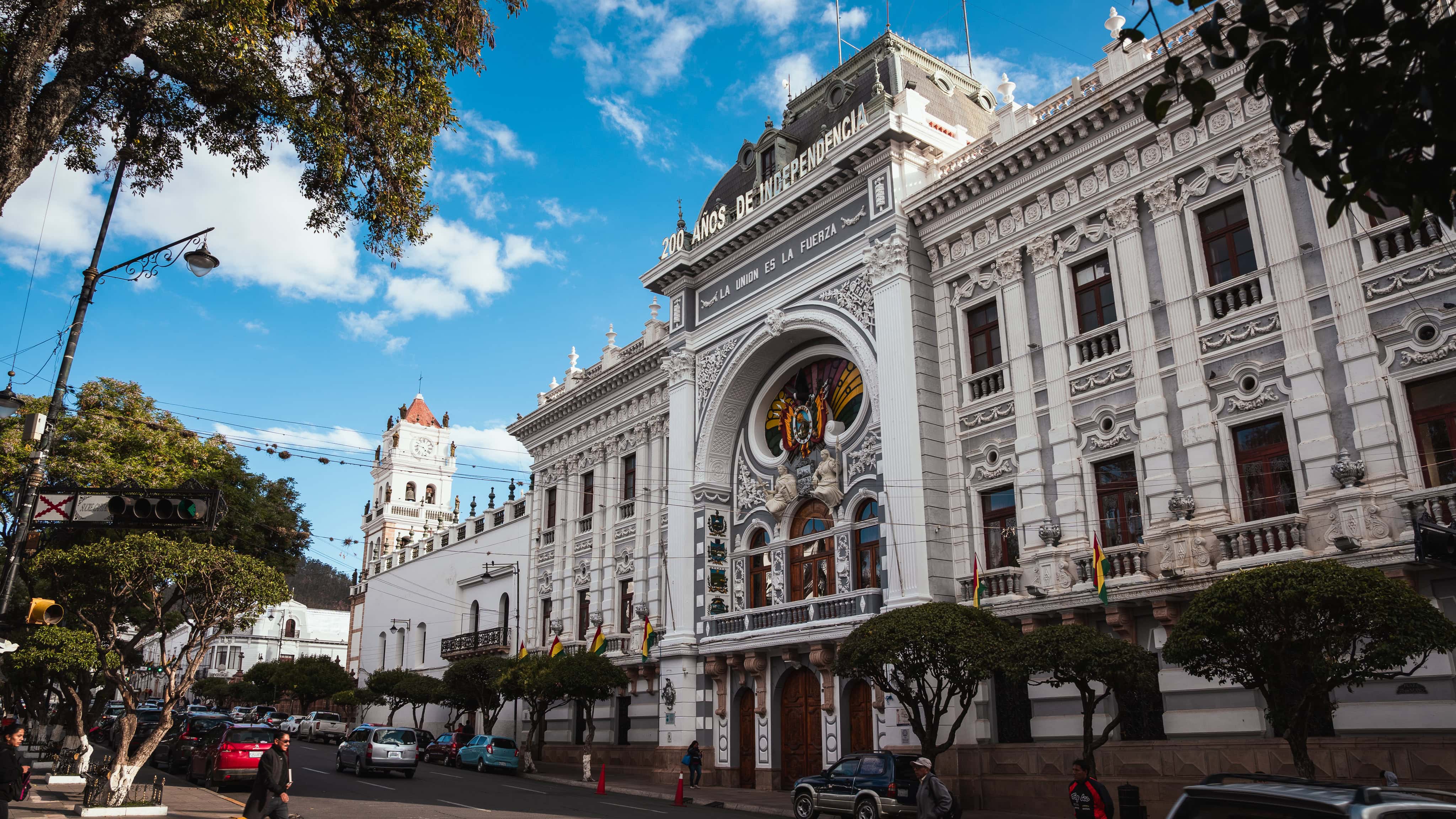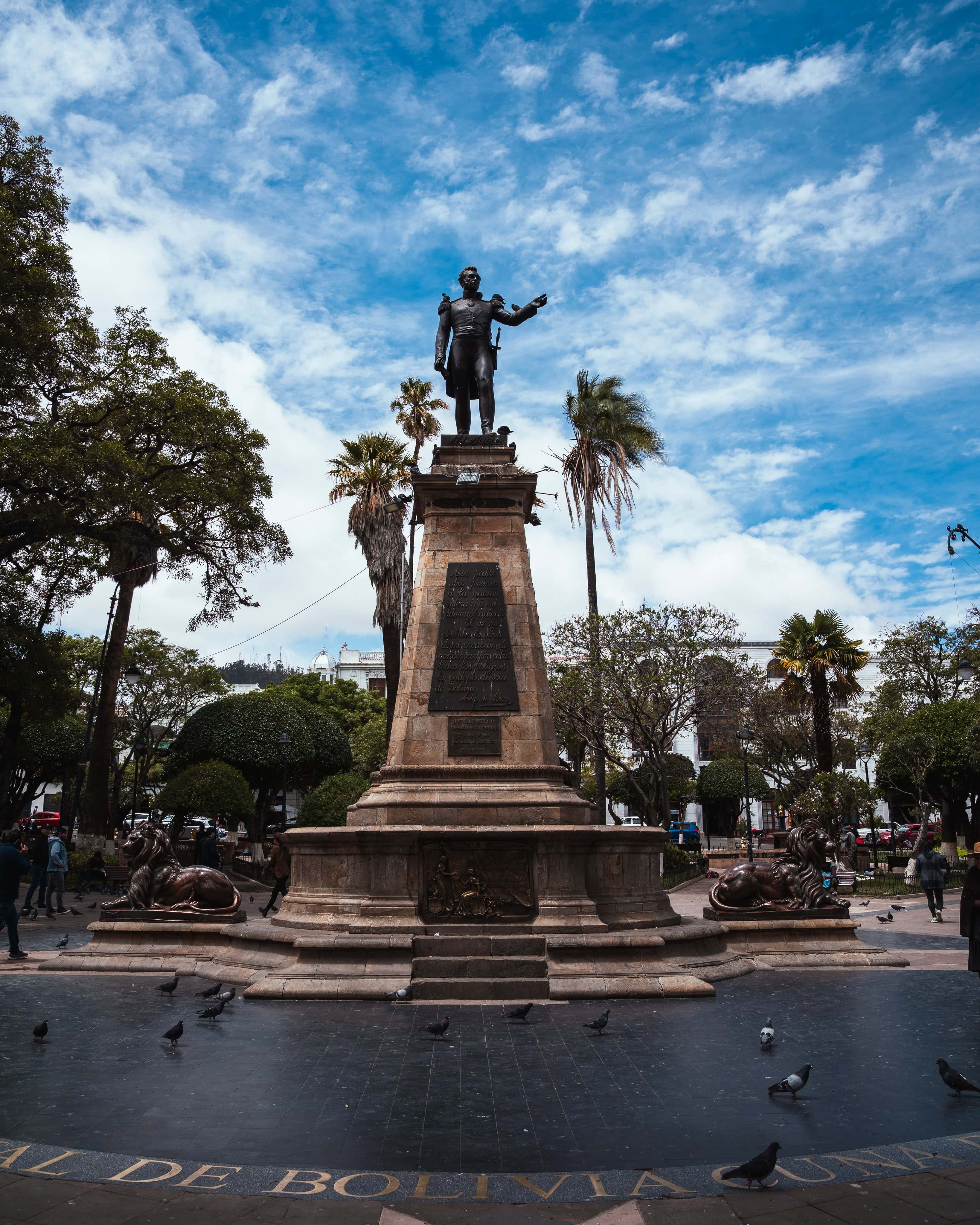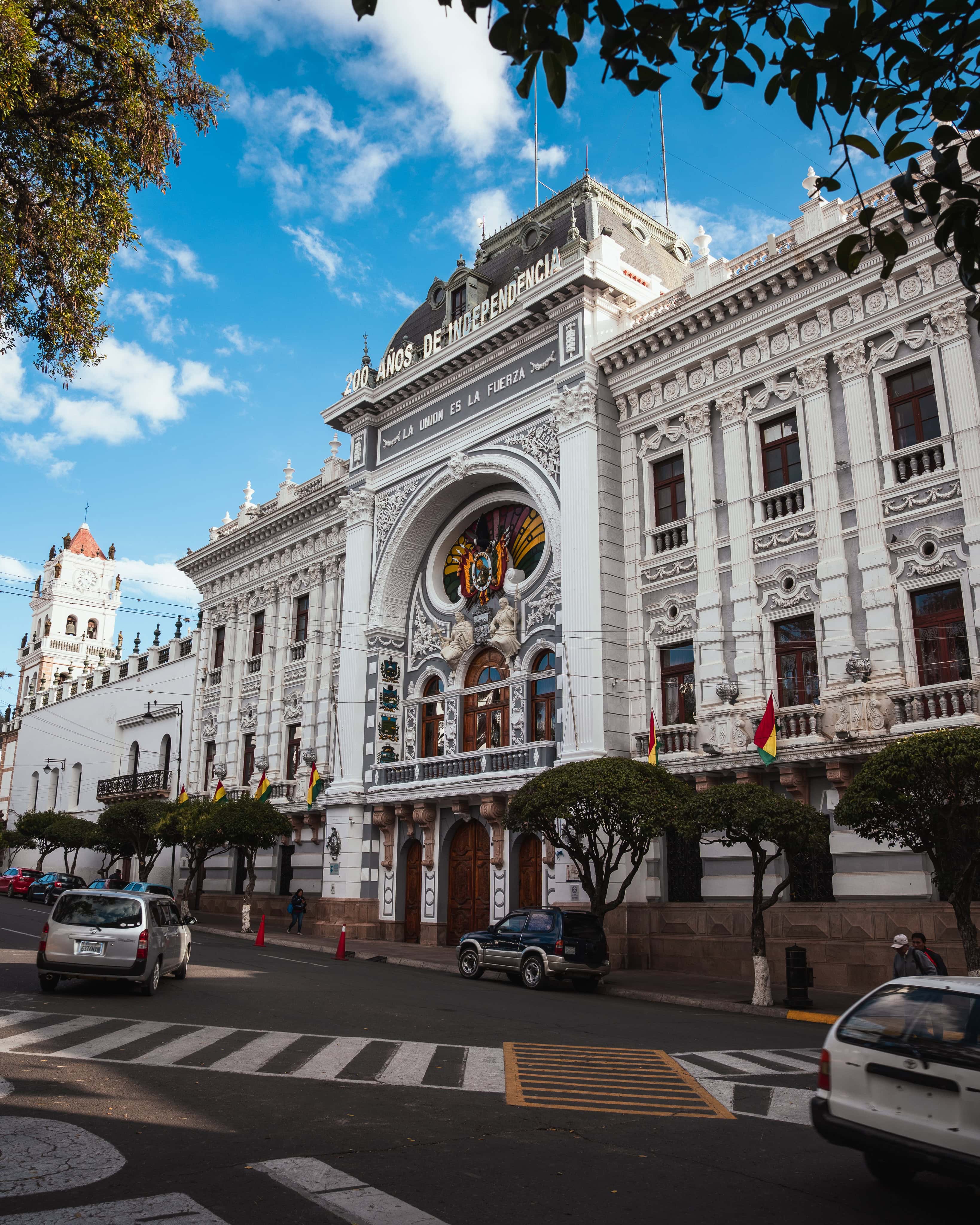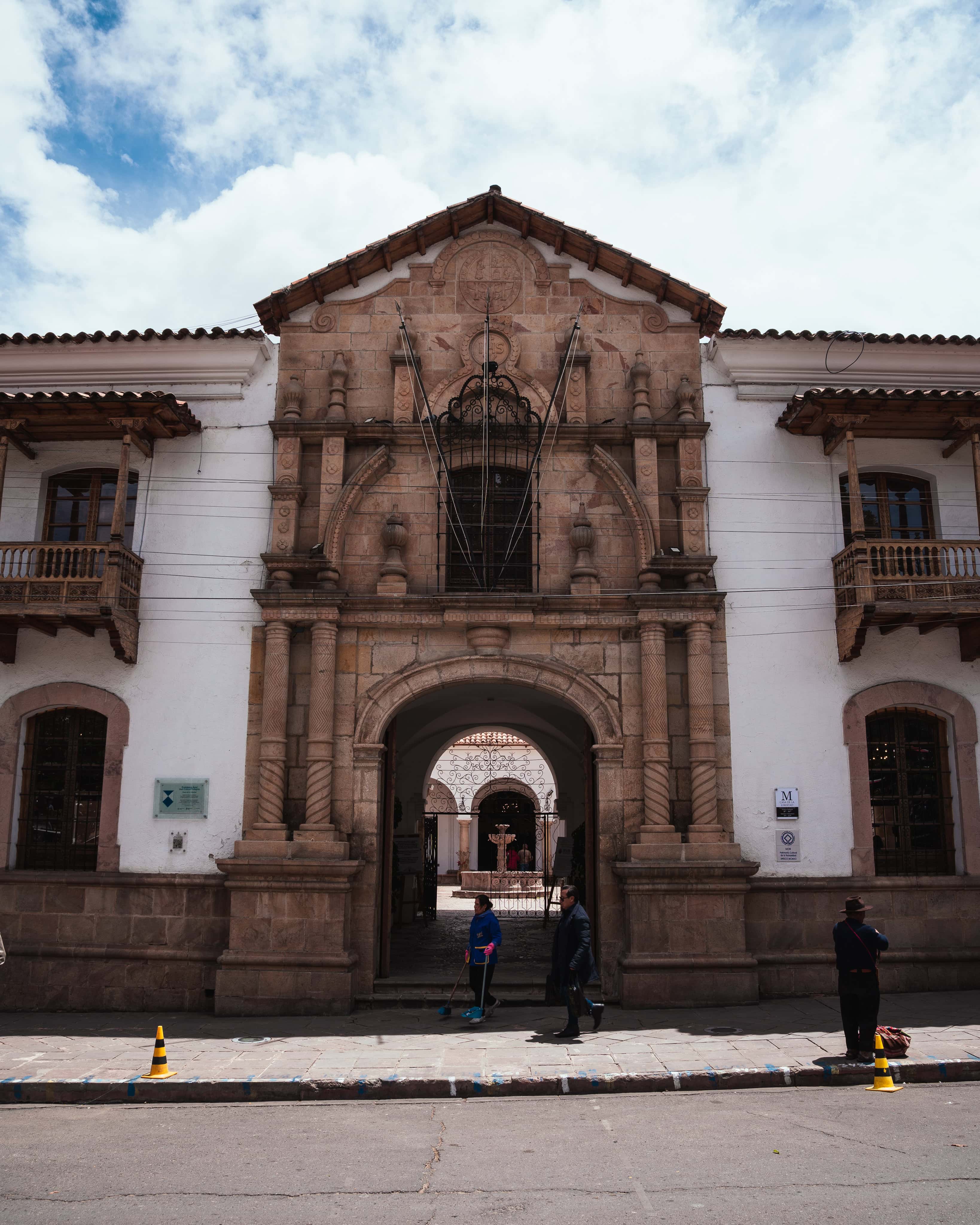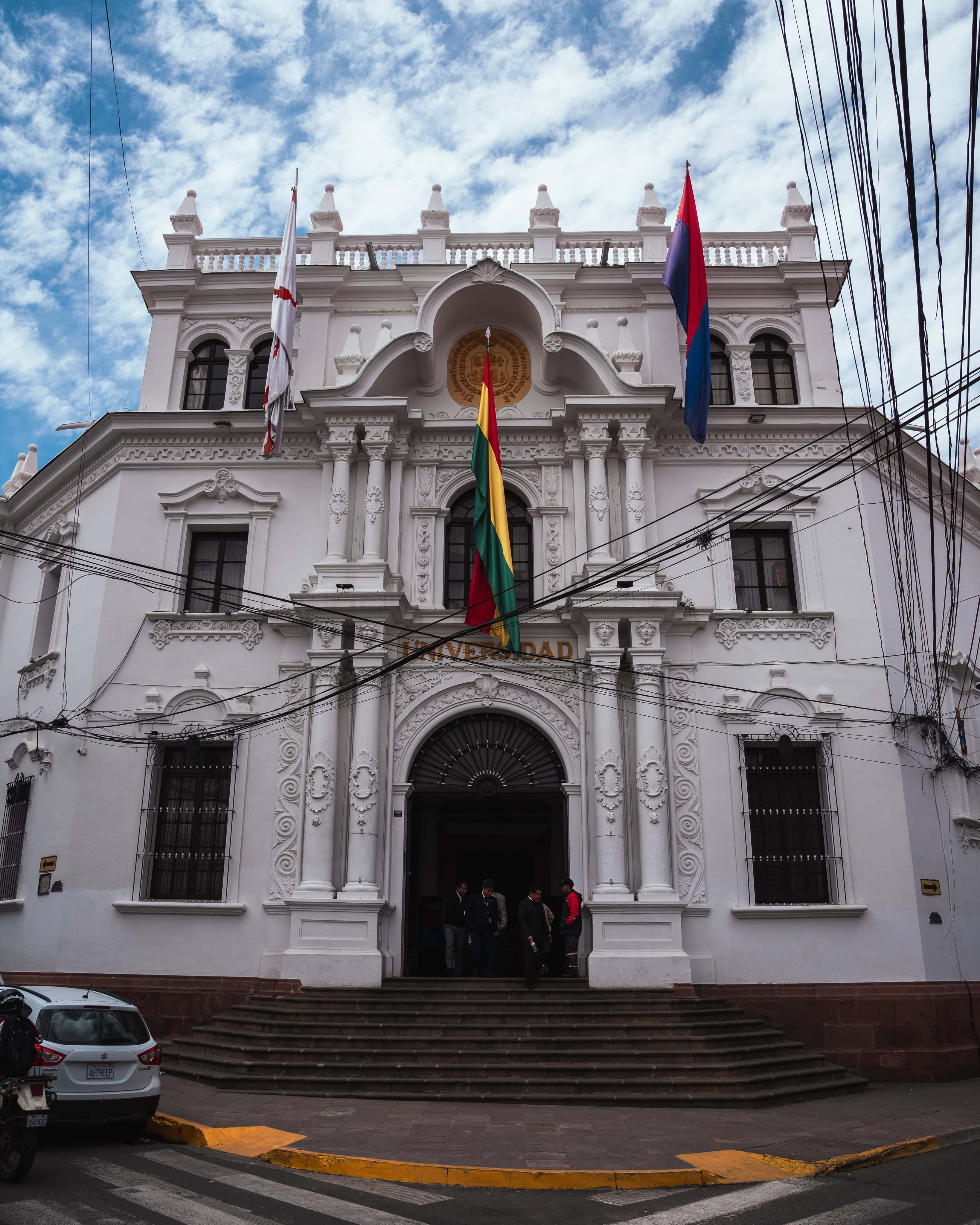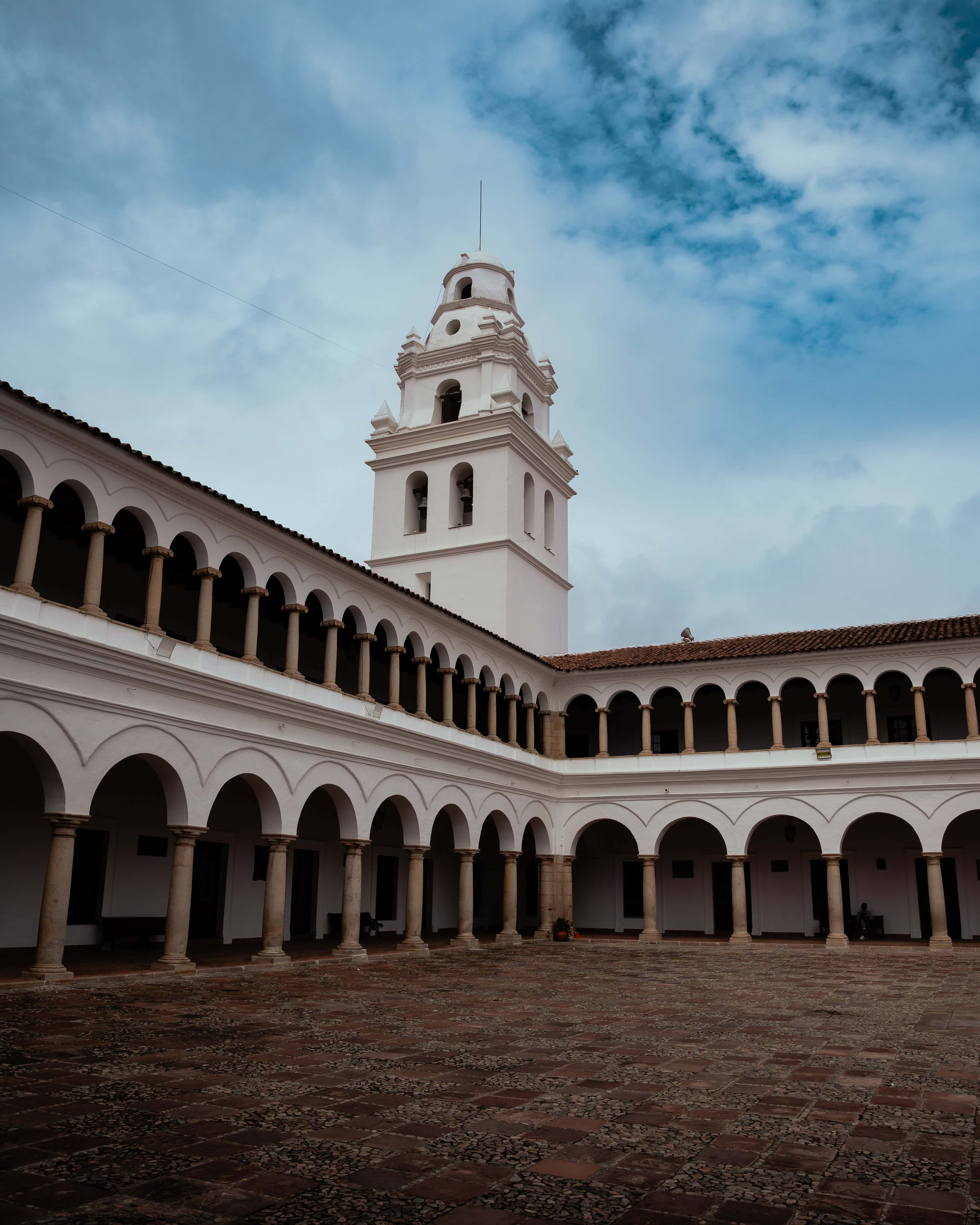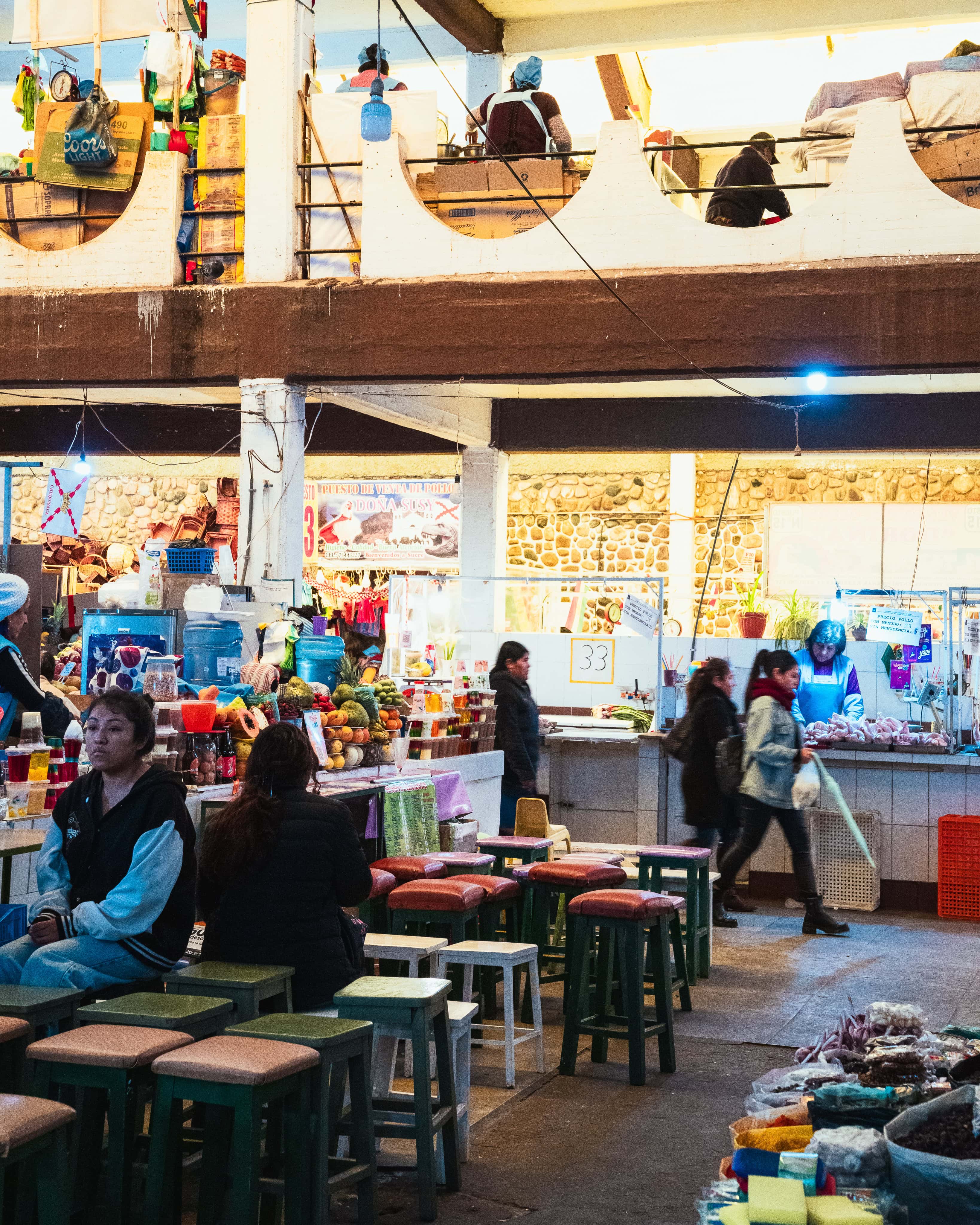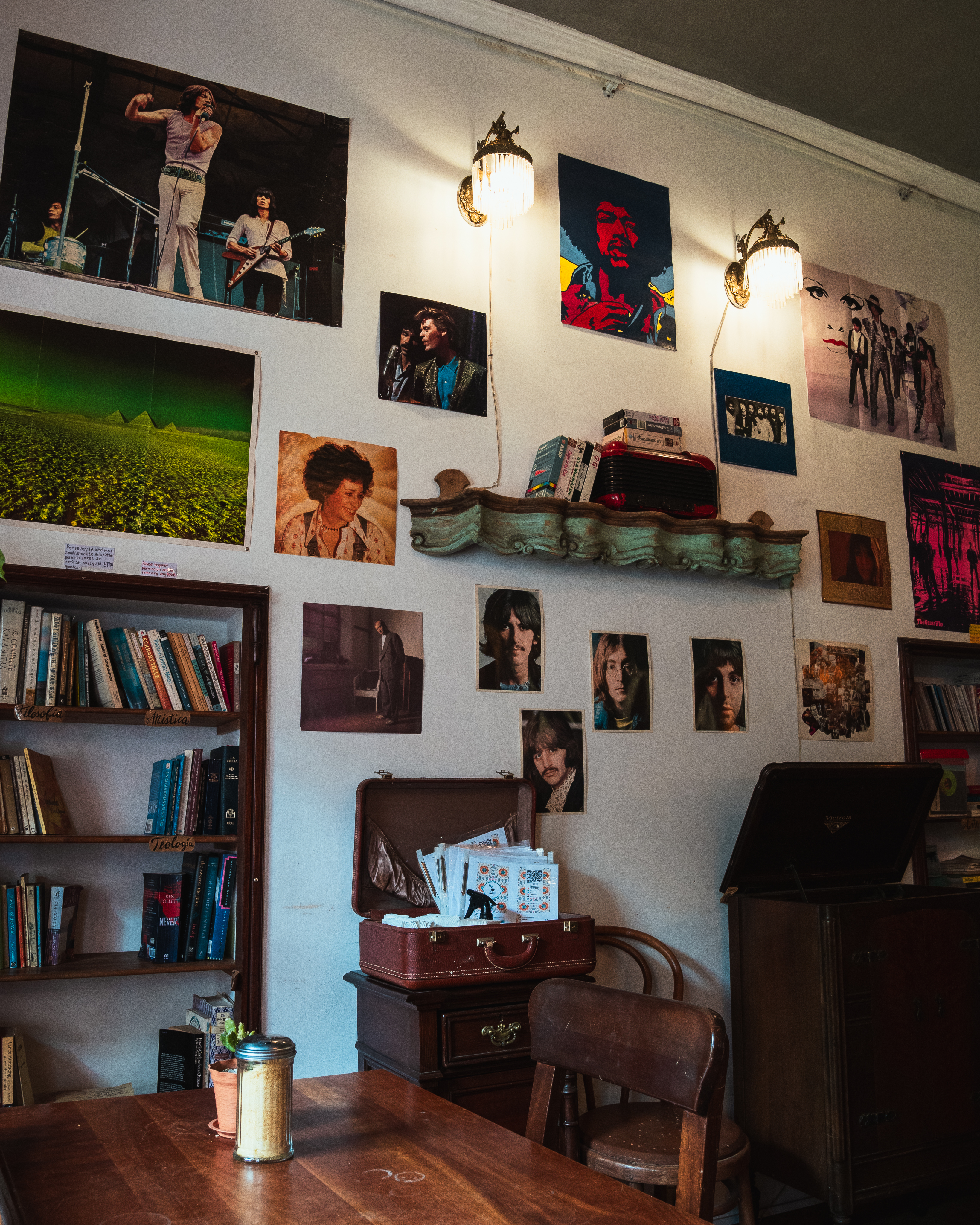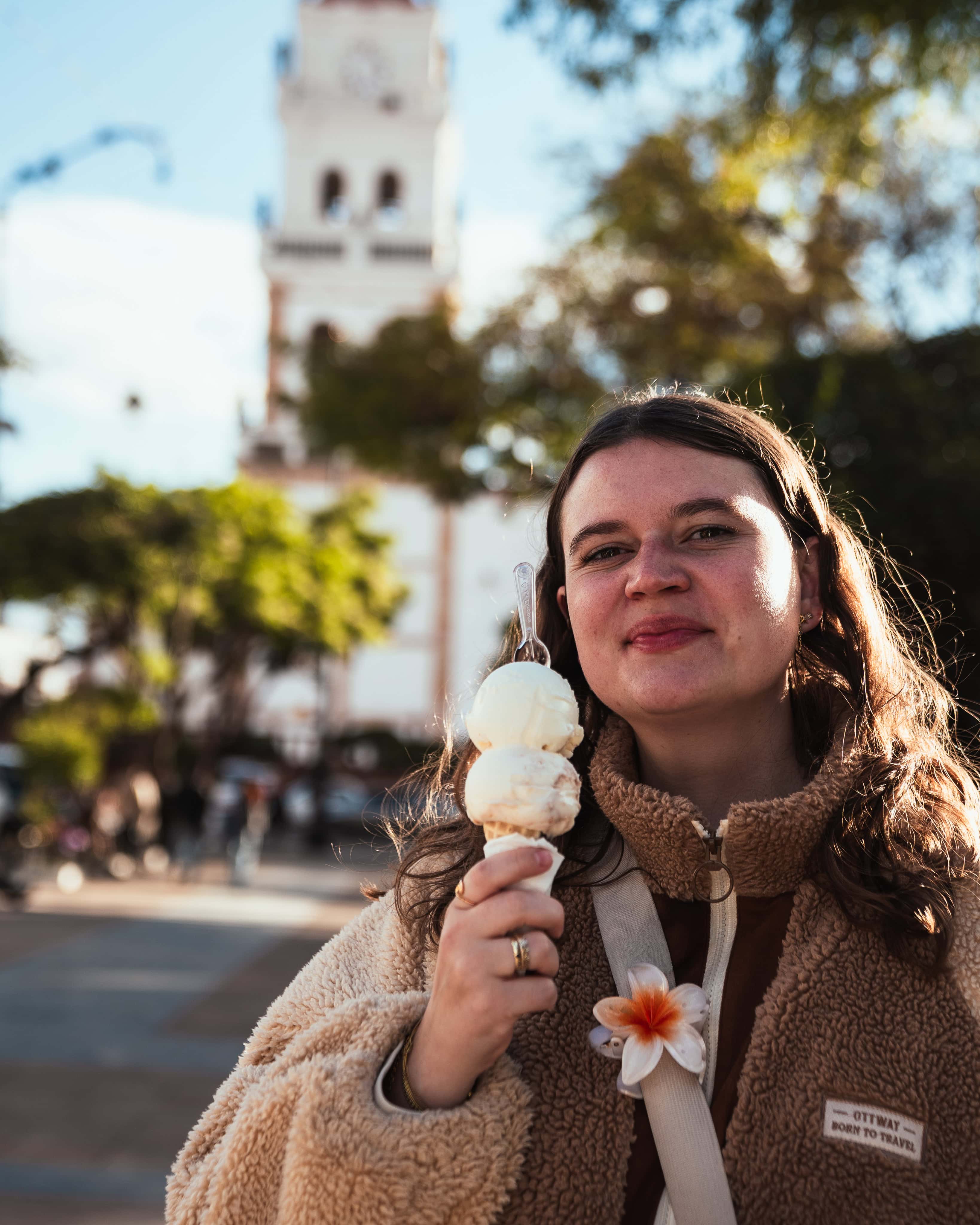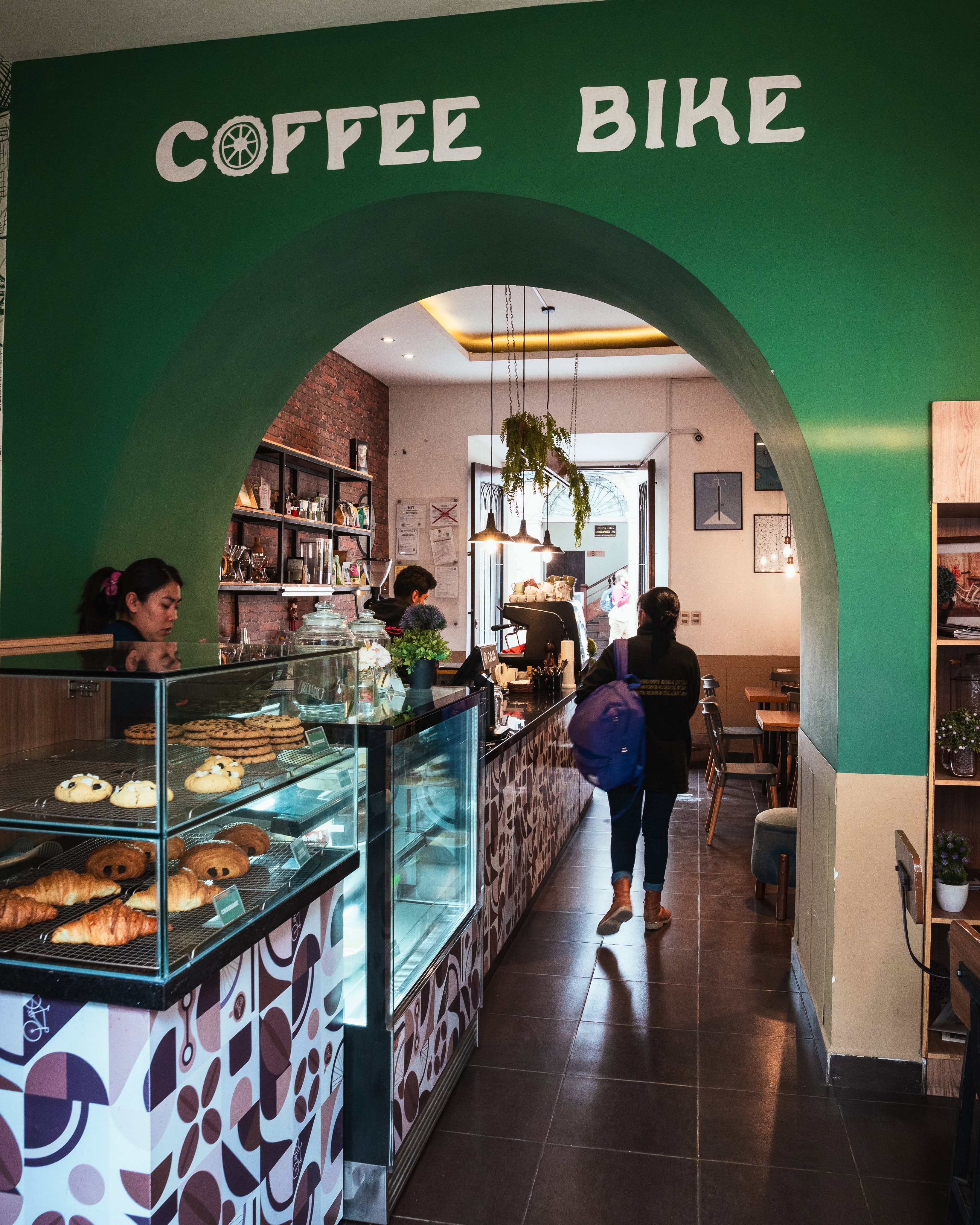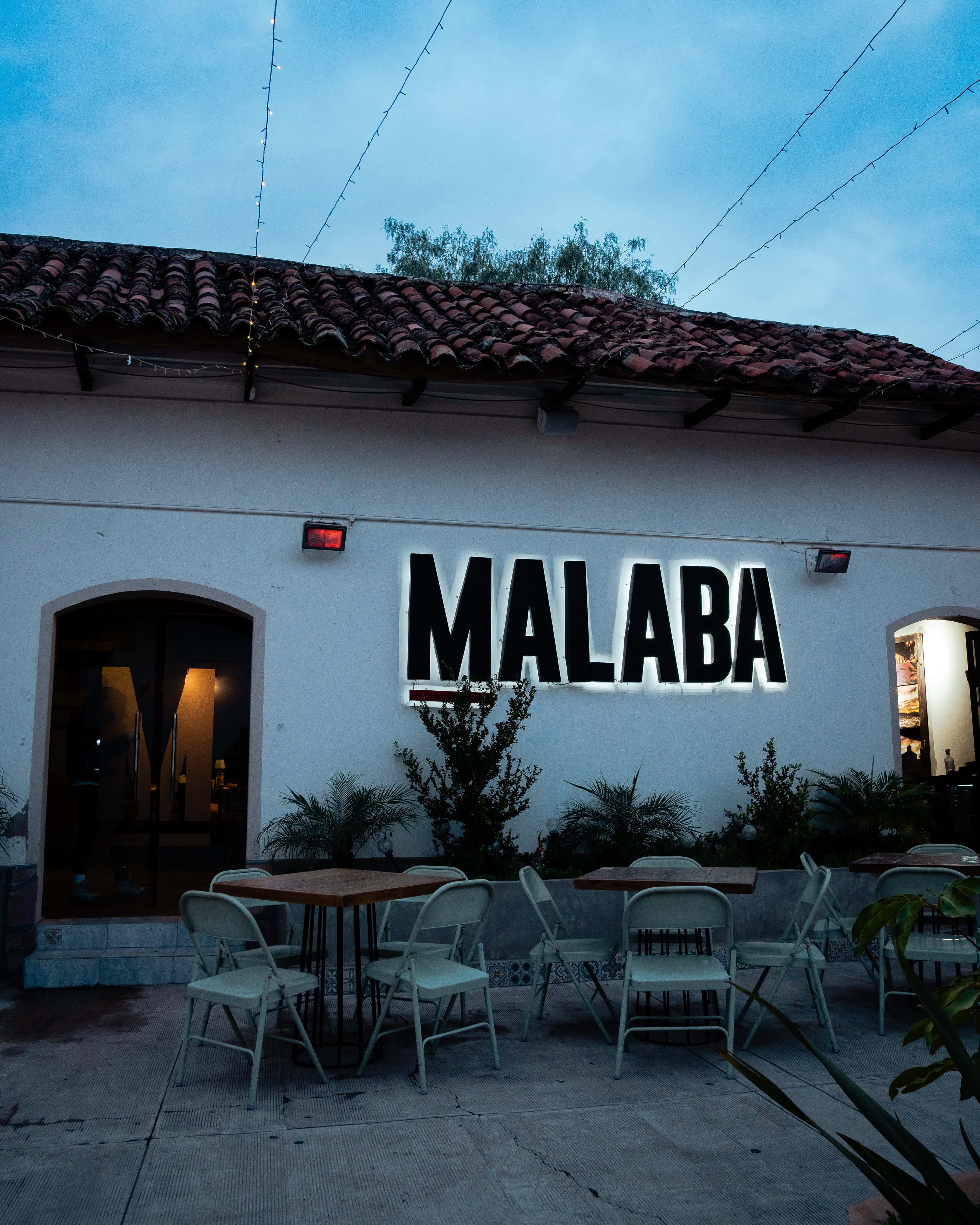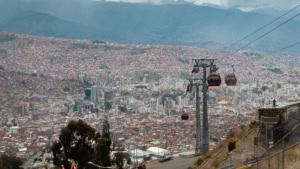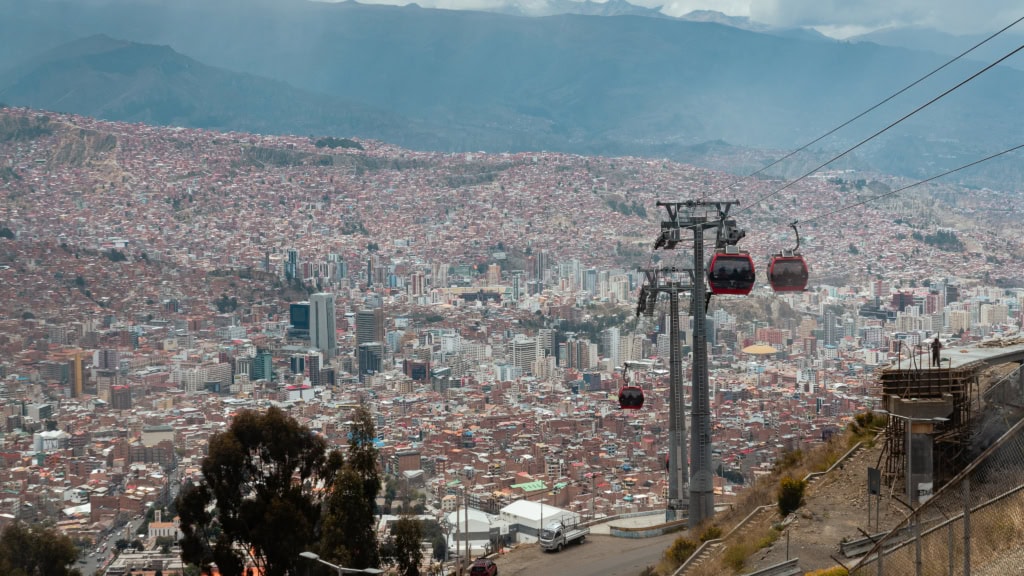Sucre, Bolivia’s ‘white city’, is a surprisingly relaxed and historically rich destination in the heart of the Andes. With its colonial architecture, lively markets, interesting museums and growing café scene, Sucre offers travellers an ideal mix of culture, tranquillity and good food. The compact old town, with its cobbled streets, is perfect for exploring on foot. Those who want to venture further afield will discover natural and cultural attractions, such as dinosaur tracks and traditional markets, in the surrounding area.
Location & climate
Sucre is located in south-central Bolivia, in a valley on the banks of the Cachimayo River, at an altitude of around 2,790 metres above sea level. This altitude results in moderate to warm temperatures during the day and significantly cooler temperatures at night, so it is advisable to pack layers. The best time to travel is during the dry season (approximately April to October), when the roads are dry and visibility is clear. The rainy season is mainly from December to March.
Why Sucre? Constitutional capital, UNESCO World Heritage Site, ‘Ciudad Blanca’
Sucre is the constitutional capital of Bolivia and home to the Supreme Court, while La Paz is the seat of government. Sucre’s historic city centre was added to the UNESCO World Heritage List in 1991, mainly due to its homogeneously preserved colonial ensemble of white façades and elegant squares. This special status protects buildings and the urban appearance, making Sucre a paradise for architecture enthusiasts and photographers.
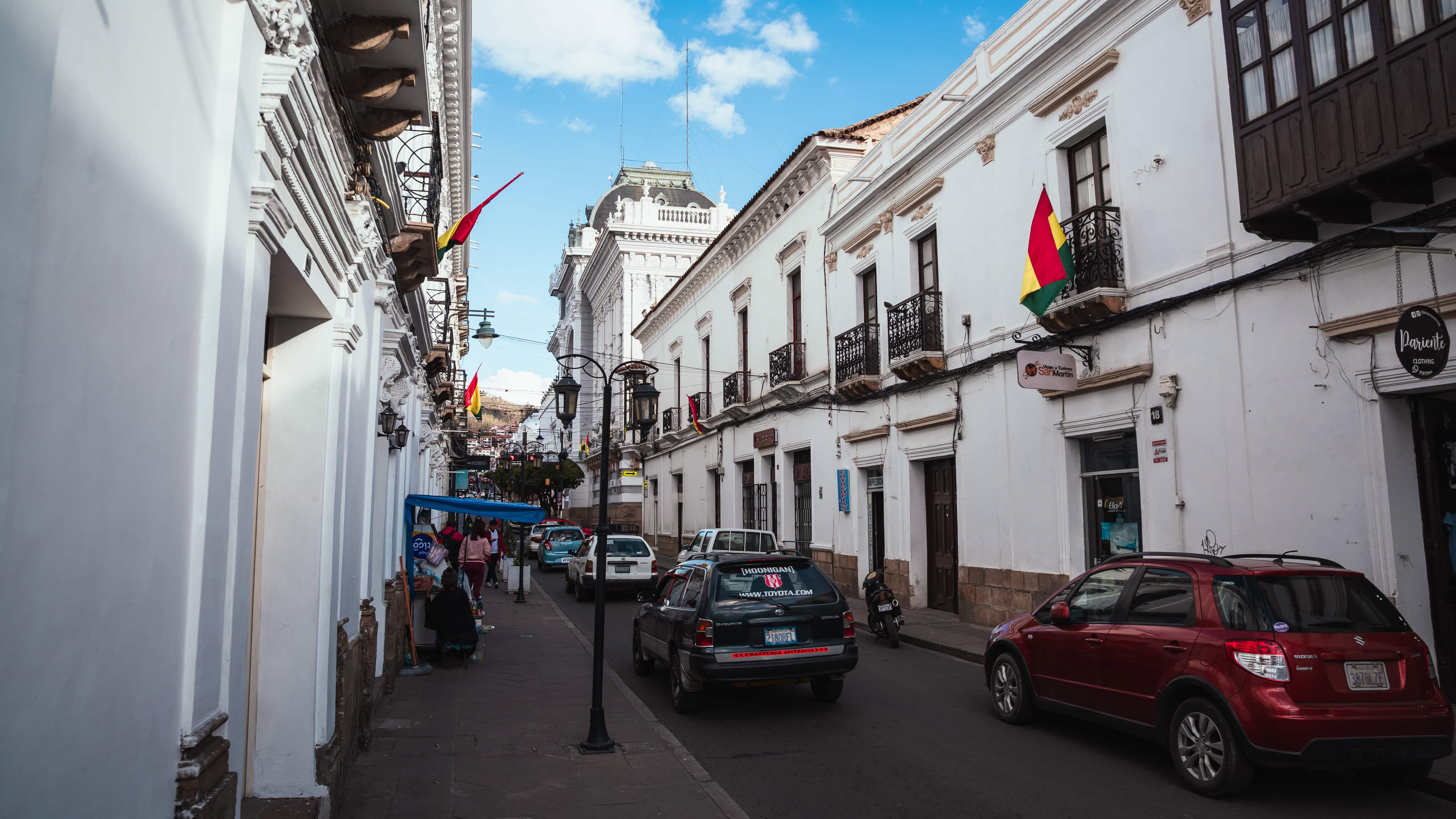
Brief historical overview
Before Spanish colonisation, the pre-colonial settlement of Chuquisaca existed on the site of present-day Sucre. Spanish colonisation and mining in the region subsequently shaped the development of the city. In 1825, Bolivia’s independence was proclaimed in the Casa de la Libertad, placing Sucre at the centre of national history. The combination of the colonial building tradition and later influences created the distinctive architecture that visitors see today.
Sights and highlights
Plaza 25 de Mayo
Plaza 25 de Mayo forms the heart of the historic old town. Surrounded by magnificent colonial buildings, including the cathedral and administrative buildings, the square is a lively meeting place for locals and tourists alike. Street performers, cafés, and souvenir stalls lend the square a vibrant atmosphere. Many city tours start here, making this the ideal central meeting point for exploring the old town.
Sucre Cathedral
The imposing cathedral on Plaza 25 de Mayo is one of the city’s most important religious buildings. It impresses with its Baroque façade and ornate interior, which features altars, statues and paintings. Services and cultural events are held here regularly, offering visitors an insight into the city’s religious life.
Casa de la Libertad
This historically significant building is considered the birthplace of Bolivian independence. Bolivia’s independence was proclaimed here in 1825. Visitors can view the original documents and rooms, which offer a fascinating glimpse into the republic’s early years. Guided tours provide historical context, making a visit essential for history enthusiasts.
La Recoleta & Mirador de La Recoleta
The former Franciscan monastery of La Recoleta sits on a hill above Sucre. As well as offering insights into religious architecture, it provides one of the best vantage points in the city. From here, visitors can enjoy panoramic views of the white roofs, surrounding hills, and city squares. The mirador is particularly popular at sunrise and sunset, when it is ideal for taking photos.
Typical streets & white façades
Sucre’s old town is a UNESCO World Heritage Site, captivating visitors with its uniform white colonial buildings, cobbled streets, and elegant squares. Strolling through the city gives you the feeling of walking through history and offers countless photo opportunities. The combination of architecture, small shops, cafés, and historical details makes exploring the streets one of the highlights of a visit to Sucre.
Mercado Central (Central Market)
The vibrant heart of everyday life in Sucre, the Mercado Central is an absolute must for any visitor who wants to experience authentic Bolivian culture. Countless stalls line the market, selling fresh fruit, vegetables, spices, meat, fish, and local specialities. As well as food, many traders also sell traditional textiles, handmade souvenirs and household goods.
Parque Cretácico / Cal Orck’o
Just a few kilometres outside Sucre lies this unique park, which is considered to be one of the world’s largest sites for preserved dinosaur footprints. Visitors can view the gigantic tracks on the rock face and learn about prehistoric fauna. Guided tours explain the geological formation of the site and its significance. This is a unique experience, especially for families and nature lovers.
Best cafés & restaurants — Recommendations in Sucre
In recent years, Sucre has developed a lively café and restaurant scene. From traditional Bolivian cuisine to fine dining and speciality coffee, there is something to suit all tastes.
Cafés & coffee culture
- Typica (Típica Café): Speciality roastery with a focus on sustainable Bolivian coffee. Ideal for a cosy afternoon, for working, or for coffee connoisseurs who appreciate quality.
- Sucré: A popular ice cream parlour and café-bakery in the city centre. It’s perfect for handmade ice cream, desserts, and short breaks between sightseeing.
- Coffee Bike: Originally a mobile café on wheels, it is now a permanent roastery and café offering high-quality coffee in a relaxed setting.
- Metro Café: A central café on a main street, known for its breakfasts, cakes and people-watching opportunities from the plaza.
Dinner & fine dining
- Malaba: A modern restaurant and bar with creative cuisine and a relaxed atmosphere. Ideal for dinner with friends or as a couple.
- El Solar: A high-end restaurant that combines local and international dishes. It is praised for its excellent food and stylish ambience, and is particularly suitable for special occasions.
- Nativa: A modern gourmet restaurant focusing on regional ingredients and creative preparation. Perfect for an innovative culinary experience.
- Terraza 625: A stylish rooftop bar with views over the colonial old town. It is ideal for a relaxed evening enjoying cocktails or light meals, especially at sunset.
This selection showcases Sucre’s diversity, offering everything from cosy cafés and modern roasteries to restaurants serving fine cuisine. Most of the restaurants are centrally located or easily accessible by taxi.
Practical travel tips
Getting there & the airport
The nearest major airport is Alcantarí International Airport, which is located about 30–35 km southeast of Sucre. It was inaugurated in 2016 and replaced the older, more difficult-to-use runways that were located closer to the city. From there, taxis or transfers take travellers to the city centre (travel time approx. 30–60 minutes, depending on traffic). There are regular domestic flights connecting Sucre with cities such as La Paz and Santa Cruz.
Health & Altitude Adjustment
Sucre is located at an altitude of around 2,800 metres, so most travellers should be able to cope well, although mild symptoms of altitude sickness are possible. Preventative measures include arriving slowly, drinking plenty of fluids, avoiding excessive alcohol consumption on the first day and refraining from strenuous physical activity upon arrival.
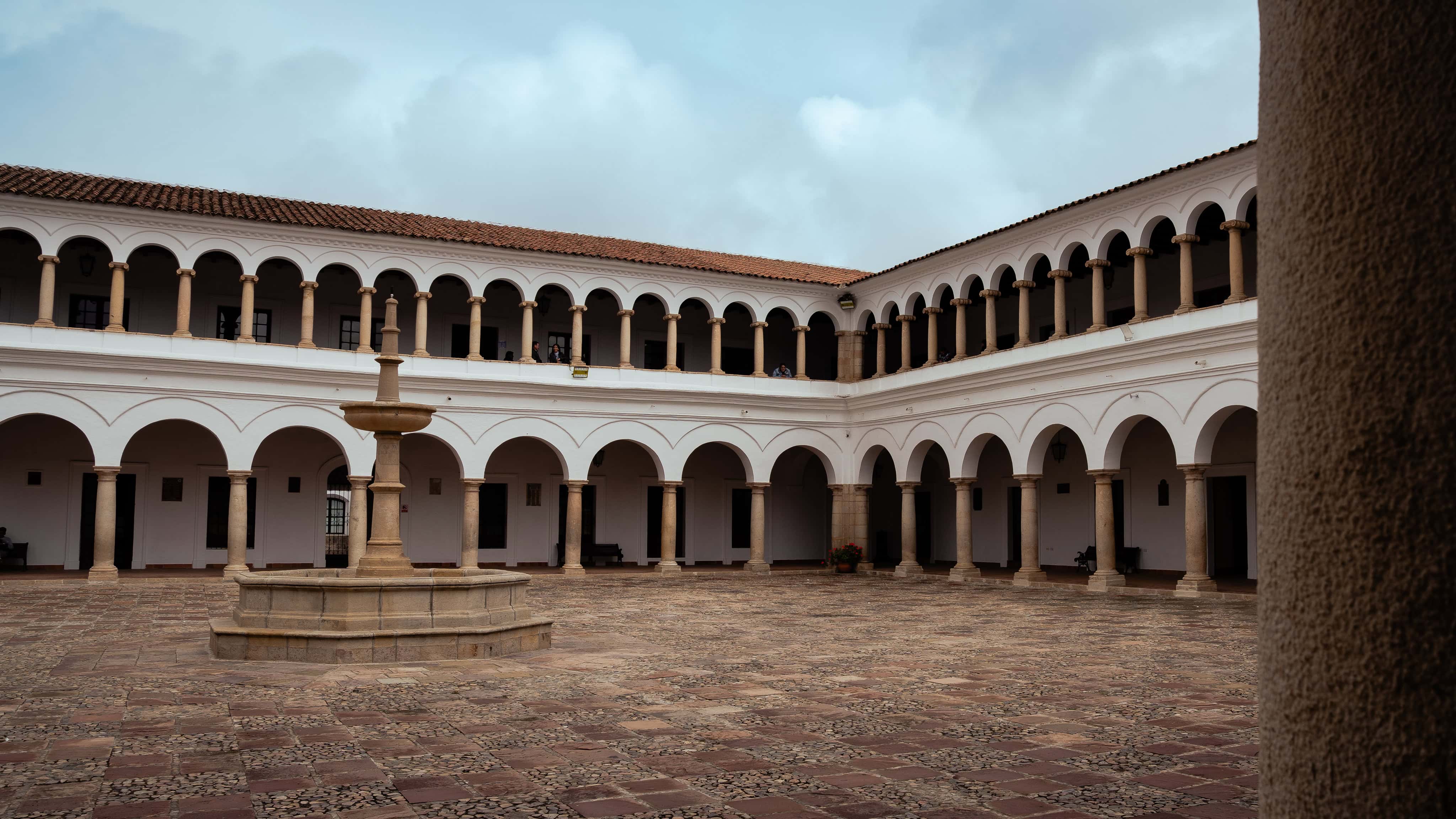
Safety & Behaviour
Sucre is a popular tourist destination and is considered relatively safe overall, but normal precautions still apply: do not leave valuables unattended, stick to busy streets and take taxis at night, and pay attention to local advice. When negotiating at markets, haggling is common, but be respectful. (Check the latest local advice before arrival.)
Local Mobility
The old town is compact and many destinations are within walking distance. For longer journeys, take taxis or private drivers. Organised tours are a convenient way to reach destinations such as the Parque Cretácico or Tarabuco. Public buses and shared transfers (micros) are available, but are less suitable if you value time and comfort.
Sucre is much more than just Bolivia’s constitutional capital. The ‘white city’ combines colonial splendour, lively markets, important museums and modern café culture in a relaxed atmosphere. Whether you are interested in history, culinary delights, or are an adventurer searching for dinosaur tracks, Sucre offers an impressive variety of attractions in a small area. Thanks to its pleasant climate, easy accessibility, and UNESCO-protected old town, Sucre is an ideal destination for anyone who wants to experience authentic Bolivian culture in comfort.

